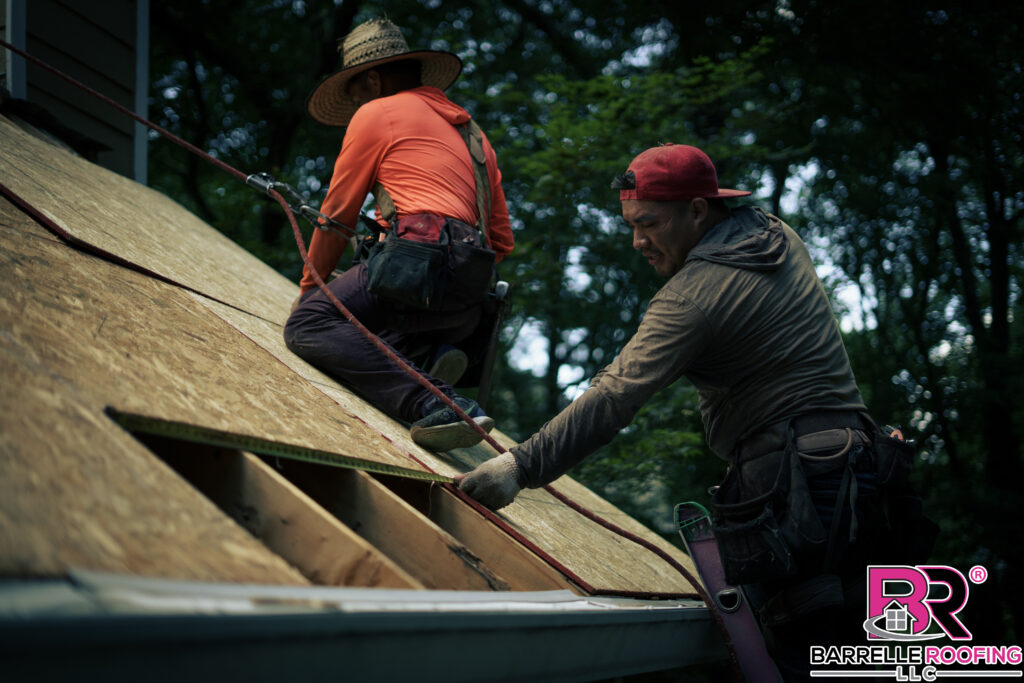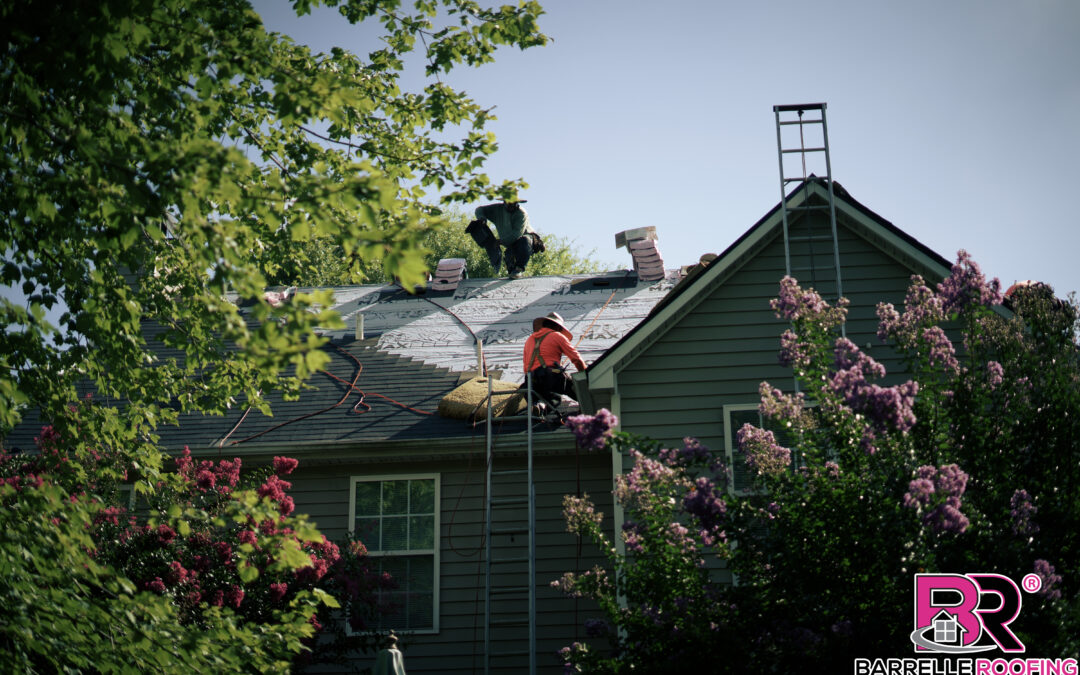Loganville Roof Replacement
A leaking chimney is more than just a nuisance—it’s a sign that water is finding its way into one of the most vulnerable points of your home.

Left unaddressed, chimney leaks can lead to interior water damage, mold growth, and even structural issues. The good news is that with the right steps, you can stop the leak and prevent future problems.
Step 1: Identify the Signs of a Chimney Leak
Sometimes, leaks aren’t obvious right away. Homeowners may first notice:
- Water stains on walls or ceilings near the chimney
- Damp odors or visible mold around the fireplace
- Peeling paint or wallpaper near the chimney
- Crumbling mortar or spalling (flaking) bricks outside
- Dripping water inside the fireplace after rain
If you spot any of these signs, it’s time to act quickly.
Step 2: Understand the Common Causes
Chimney leaks can come from several different sources, including:
- Damaged or missing chimney cap: Without a protective cap, rain can fall straight into the chimney flue.
- Worn flashing: Flashing is the metal material that seals the connection between your chimney and the roof. If it’s cracked, rusted, or pulled away, water can seep in.
- Cracked crown or mortar joints: Over time, the concrete crown at the top of the chimney and the mortar between bricks can deteriorate. This allows water to penetrate.
- Porous masonry: Brick and mortar naturally absorb water if they aren’t sealed properly.
Identifying the source is crucial before you can fix the problem.
Step 3: Call a Professional for an Inspection
While it may be tempting to try and diagnose or repair a chimney leak on your own, it’s best to call in a roofing or chimney professional. They have the tools and expertise to safely inspect your roof, flashing, and masonry. A thorough inspection will determine whether you need a simple repair, such as resealing the flashing, or more extensive work like rebuilding part of the chimney crown.
Step 4: Consider Your Repair Options
Depending on what’s causing the leak, repairs may include:
- Installing or replacing a chimney cap
- Resealing or replacing flashing
- Repairing or rebuilding the chimney crown
- Tuckpointing or repointing the mortar joints
- Applying a waterproof sealant to bricks and masonry
Your contractor should explain the best course of action for both immediate repair and long-term protection.
Step 5: Protect Your Home for the Future
Once the leak is fixed, it’s wise to take preventive steps. Schedule annual roof and chimney inspections, especially before storm season. Keeping gutters clear of debris also ensures water flows away from the chimney and roofline. A small amount of maintenance now can save you thousands of dollars in repairs later.
Final Thoughts
A leaking chimney should never be ignored. What starts as a minor drip can quickly escalate into costly damage inside and outside your home. If you suspect a chimney leak, act fast: look for the signs, understand the possible causes, and call a trusted professional for help. With the right repair and ongoing maintenance, you can keep your home dry, safe, and secure.
